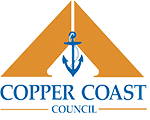Land Owners Responsibilities
Land Owner Responsibilities - Reducing Flammable Undergrowth
The definition of 'Flammable Undergrowth' is grass, weeds and any other growth which may become flammable if not destroyed in the ordinary course of the season.
The management of fuel loads, including the selective management of native vegetation, is one of many steps landowners can take to prepare their properties for the bushfire season. Removing grassy and woody weeds may be the most suitable method to reduce the fuel load on your property while retaining the environmental values associated with the native vegetation.
Land Owners - Legal Requirements
Pursuant to Section 105(F) of the Fire and Emergency Services Act 2005, all land owners/occupiers must take reasonable steps to:
- to prevent or inhibit the outbreak of fire on the land; and
- to prevent or inhibit the spread of fire through the land; and
- to protect property on the land from fire; and
- to minimise the threat to human life from a fire on the land.
If the property is under one hectare in area:
- all grass and undergrowth is required to be reduced to a maximum height of ten (10) centimetres in height.
If the property is over one hectare in area:
- establish and maintain a fuel break around the whole area, placed as near as practicable to the perimeter
- fuel break shall be at least a five (5) metre wide strip on which all grass, pest plants and undergrowth is reduced to a maximum of ten (10) centimetres in height.
All rural properties are required to have:
- a four (4) metre fire break all around the perimeter of the property, this includes property with stock,
- a twenty (20) metre fire break around any structures, buildings etc on the property
Land Clearing - Do I Need Approval?
Approval is not required for landowners to modify/remove all vegetation including native vegetation (with the exception of significant trees) in the following situations:
- within twenty (20) metres of a prescribed building (e.g. a house or school)
- within five (5) metres of a prescribed structure (e.g. garden or pool shed) on your property.
CFS is the authority that approves native vegetation clearances and has a wide range of information including a step-by-step process guide to follow when seeking to reduce, modify or remove native vegetation for bushfire safety.
Council's Role and Actions
Each year, between October to November, Councils authorised officers will undertake inspections of vacant land in the Copper Coast, to identify flammable undergrowth greater than 10 cm. Any vacant land identified not to comply will be issued with a Flammable Undergrowth Notice pursuant to Section 105(F) of the Fire and Emergency Services Act 2005, requiring the land owners/occupiers to take action:
- to protect the property on the land from fire, and
- to prevent or inhibit the outbreak of fire on the land, or
- the spread of fire through the land
by the clearing any potentially flammable undergrowth on the land to a maximum height of 10cm within fourteen (14) days.
The clearing of properties by burning is not permitted. Therefore you have the option to undertake yourself or engage a contractor to carry out flammable undergrowth management. Should you wish to engage a local contractor, please refer to the local contractor list.
If the land owner/occupier of the land fails to comply with a notice served pursuant to the above Act, Council and its agents may enter the land and carry out the requirements of such notice. Any expense incurred by the Council will be recovered from the land owner/occupier. Council fees in such instances will be charged at an hourly rate for any properties over half an acre.
Further Information
If you require further information, please contact Council on (08) 88281 200.

